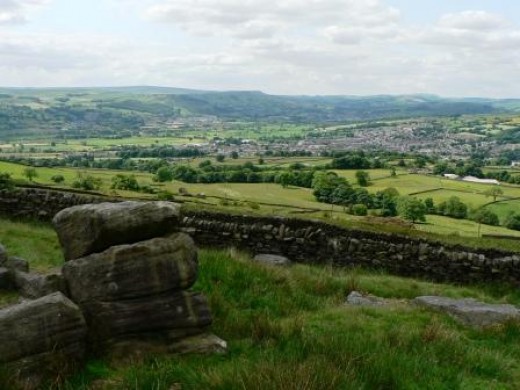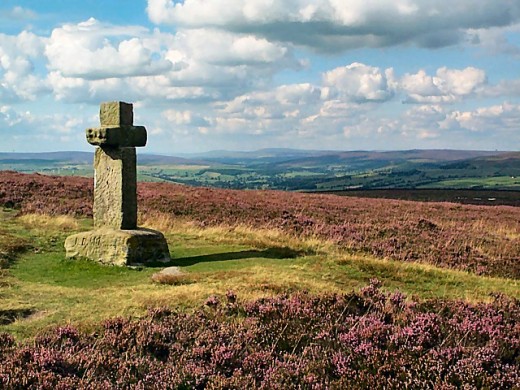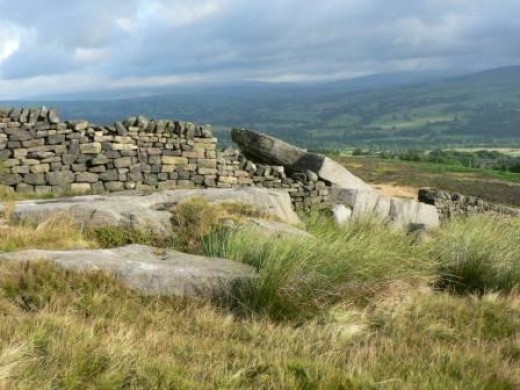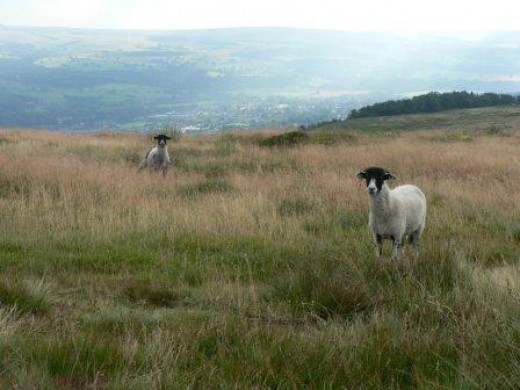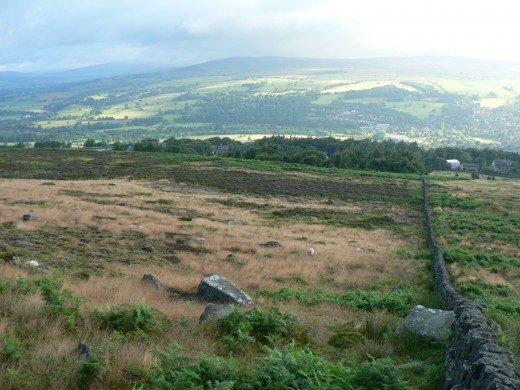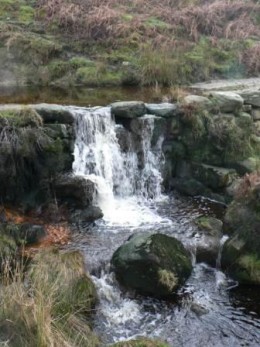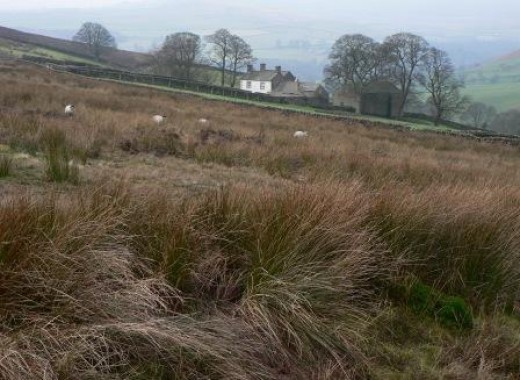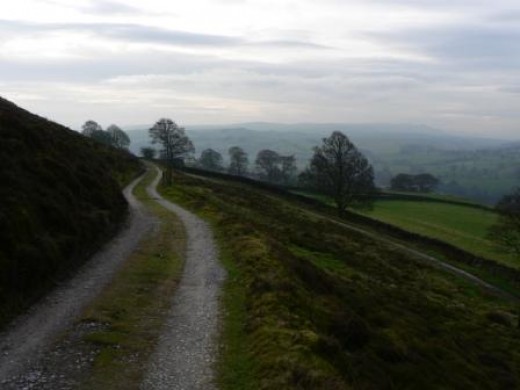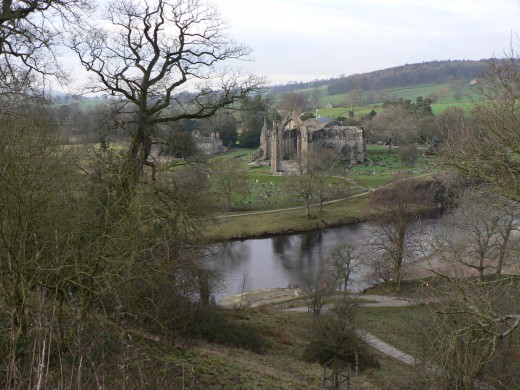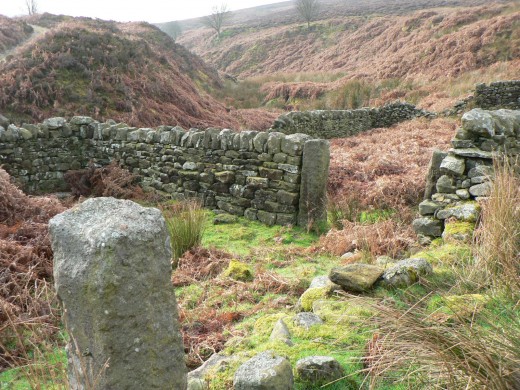Baht ‘at?
This in Yorkshire-English means “On Ilkley Moor, without your hat” – which would be a daft thing to do, as it’s a bit windy up there.
Let me show you around Ilkley Moor, Yorkshire. It’s near my home – I can see it from my window – so it has a special place in my life.
And I’d like to tempt you to come and see it for yourself. But bring your raincoat.
(Images: either taken by me or purchased from Shutterstock)
To Get You In The Mood …
Before I show you around, sit back and listen to the Yorkshire National Anthem sung by some true Tykes (Yorkshire folk) – look out for me in the final crowd scene!
Ilkley Moor
Ilkley Moor is a huge ridge of land that rises above and straddles the Rivers Wharfe and Aire in Yorkshire. It’s named after the elegant town of Ilkley, which is the starting point for most people who walk on the Moor.
Five thousand years ago Bronze Age inhabitants farmed the land around their settlements on the middle slopes above the heavily forested valley bottom. The Moor looked very different then – more trees, more cultivated fields, more wild animals, including boar and wolf.
But today the upper and middle slopes are moorland, with rough grass, rushes, heather, cotton grass and bracken covering the rocky ground. In the river valleys, the forests are gone – the land drained centuries ago – and farmers now graze cattle and sheep on the lower slopes.
Streams (or ‘becks’) rise, tumble and fall rapidly into the valley below, carving deep ravines into the moorside. The boar and wolves have gone too, but fox, deer, badger, hare and rabbit can be found, along with grouse and many other forms of bird life, including Merlin and Kestrels – often seen hovering above some hapless field mouse they have spotted below.
Ilkley Moor is only a dozen or so miles from the Metropolitan District of Bradford, so it is the popular place for those wanting respite from the rush of the city.
But even at weekends you can quickly leave the crowds behind. Some visitors don’t venture too far from their cars and the cafes at the fringes of the Moor, although with a map and good walking boots, you can stride off and quickly find solitude.
Far From the Madding Crowd …
A Sense Of The Past
 One of the attractions for me on Ilkley Moor is to find links with the past. I like tracing the burial cairns and ancient stone markings, learning the origins of old place names, and feeling myself to be part of a continuity of life on the Moor.
One of the attractions for me on Ilkley Moor is to find links with the past. I like tracing the burial cairns and ancient stone markings, learning the origins of old place names, and feeling myself to be part of a continuity of life on the Moor.
This photograph, right, shows ‘The Twelve Apostles’ – a stone circle believed to date back to the middle Bronze Age. There were twenty stones originally, but only these are left, and their original positions in the circle are not known.
Their meaning is still subject to much speculation, but they are located at one of the highest points on the Moor, with long-distance views in all directions – which may account for their origins and symbolic meaning. It is difficult not to feel a sense of awe here, particularly early in the morning or as the sun sets in the evening. The world would have seemed a huge fathomless place to the early inhabitants of the Moor.
 Bronze Age habitation of the Moor can also be found with the ‘Cup and Ring’ markings found on rocks in over 300 locations scattered across a wide area of moorland.
Bronze Age habitation of the Moor can also be found with the ‘Cup and Ring’ markings found on rocks in over 300 locations scattered across a wide area of moorland.
The exact meaning of these markings is still unknown.
Taking The Waters
White Wells, overlooking the town of Ilkley, is a link with more recent history.
It is an 18th century spa bath, built at the time when ‘taking the waters’, or hydrotherapy, was fashionable in Ilkley – the scientist, Charles Darwin, visited the town for rehabilitation purposes. White Wells contains a plunge pool, still in use today. Waters from the moor feed into the pool and flow down into the town below.
In the valley below was a fashionable hotel, with its own plunge pools, for the less energetic, who did not, or could not, contemplate the steep walk from the town to White Wells.
 Buy Your Dog a Drink
Buy Your Dog a Drink
And at the end of a long day hiking across the Moor, you and your dog can have a well-earned pint of Tetley’s Best Bitter.
Cheers!




